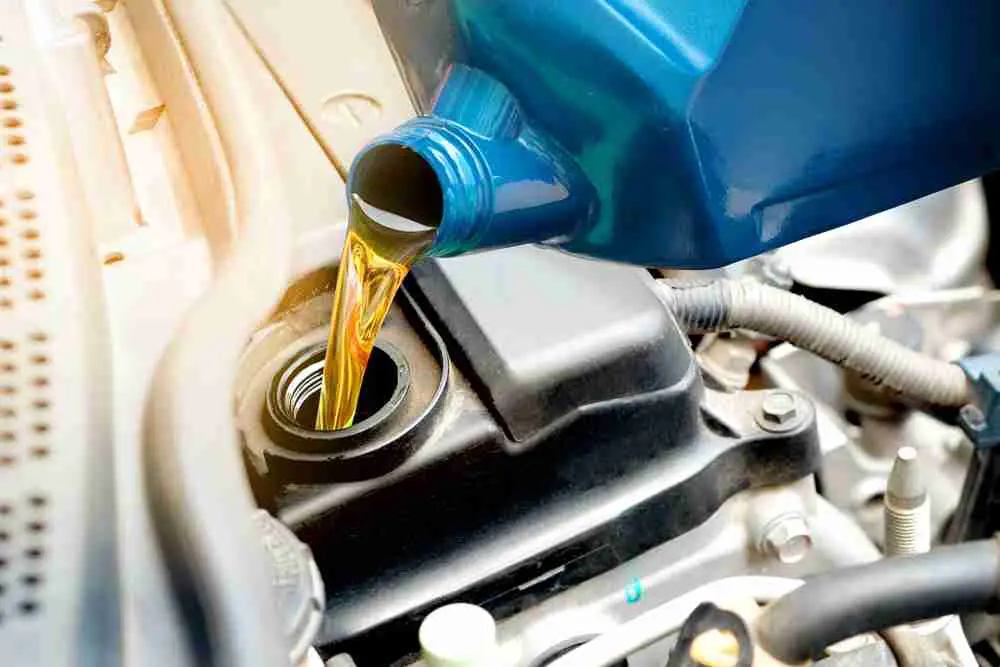Should You Change Your Oil by Date or Mileage?

Generally, the best way to check if your car needs oil is via mileage. This is especially relevant if you drive your vehicle regularly, as long road trips or long-distance work trips can often mean that your car will need an oil change right afterward.
However, you can also track the status of your car’s oil by calendar time, and this is simply due to the fact that oil chemically breaks down over a period of time due to factors such as exposure to heat, water, or oxygen due to an unsealed environment.
However, this would only ever happen if you were keeping a car in long-term storage, so mileage is usually the easiest way to figure out if your car needs an oil change.

Should I change my oil after the first 1000 miles?
Not necessarily. Though you might have been told that a new car needs an oil change after 1000 miles, this advice is pretty outdated by today’s standards, and usually not needed.
The idea was that all new cars were given an engine that contained a ‘special’ oil intended to help break in the engine and that, as soon as the oil had served its purpose after 1000 miles, the owner would then need to replace it with normal oil.
Though every car is different and we can’t rule out that your car might very well need an oil change at 1000 miles, it is generally recommended that you only ever get an oil change after every 3000 miles, or sometimes even longer than that.
However, to be on the safe side, we recommend that you double-check if your car requires an oil change after the first 1000 miles by referring to the owner’s manual that it would have come with.
Should you change your oil every 3 months?
Whether or not your car will require an oil change after 3 months will very much depend on what type of car you have, as well as how old it is.
Traditionally, it was recommended that oil changes were to be made at around 3,000 miles, or approximately every 3 months. However, thanks to oil and vehicle developments over the past decade or so, it means that newer cars are designed to not require such frequent oil changes.
For example, many newer cars are created to be compatible with pure synthetic oils, which were specifically designed to be able to offer a longer service life. So much so, that synthetic oils are able to last anywhere from between 5,000 to 10,000 miles before needing to be replaced, which is a pretty vast step-up from the service life of mineral oil.
For this reason, the best way to decipher how often you should be changing your oil is by double-checking what oil your car runs off by checking your owner’s manual.
Can I just add oil to my car instead of getting an oil change?
Though the best course of action is to always take your car to your local garage if you think it needs an oil replacement, if you simply want to give your vehicle top-up in-between garage visits, then it is possible to do so.
Please keep in mind that adding oil to your car yourself does come with some risks (mainly damage caused from accidentally overfilling) you should be sure to only attempt this if you are experienced with cars and confident that you can do it.
First, you’ll want to assess the oil level. Follow these steps to make sure you do it correctly:
- Ensure that the engine is cold (hasn’t been warmed up through use).
- Pop the hood and take out the dipstick. Wipe it with a lint-free cloth.
- Lift it up to eye level and take a look at the dipstick to determine the health of the oil.
After you have inspected the dipstick, the color will indicate to you whether or not your oil needs to be changed. Additionally, there are usually indicators on the dipstick, that will let you know if the oil is above, below, or at the optimal level. If the oil is below the acceptable level, you can then go ahead and top it up with some oil.
Though this is a quick fix, it’s important that you consider taking your car for an oil change as soon as possible, as topping up the oil can cause the oil to become watered down and unable to properly do its job.
How long can you drive with low oil?
Generally speaking, cars running on mineral oil should be able to go anywhere from 3,000 to 7,500 oils before needing to be changed.
However, this figure is a little different if a car is running off synthetic oil, as this type of oil is designed to be able to last anywhere from 10,000 to 15,000 miles before needing to be changed.
However, if you notice that your car has low oil after a particularly long drive or some time spent in storage, then you might be wondering whether or not you can get away with driving on low oil to save going to the garage.
However, this is a huge mistake to make as driving your car with low oil in the system can completely ruin your vehicle’s engine, and potentially even break the motor in the process.
If you’ve inspected your car’s dipstick and it’s indicating to you that the oil is low, or your car has a low oil symbol and the light has come on, it’s very important that you book your car in for an oil change as soon as possible.
Not only will this ensure that your car continues to run smoothly, but it will also ensure that you don’t run into any costly repair prices from a damaged engine.













No Comment